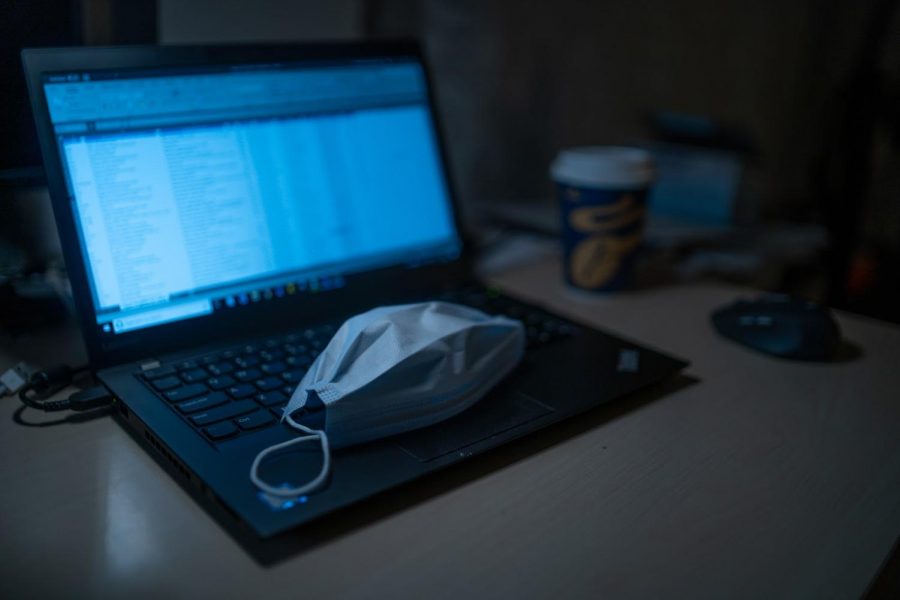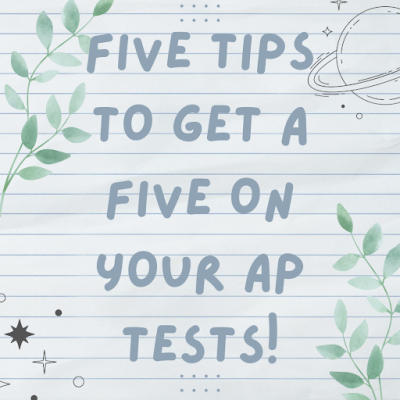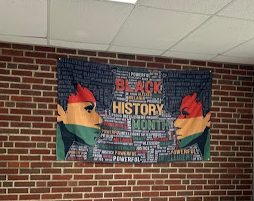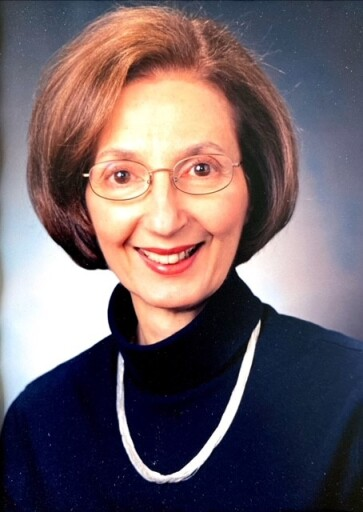How are teachers affected by the hybrid model at Solon?
November 24, 2020
For part of the second quarter, grades 7-12 of the Solon City School District started learning in a hybrid model–students that opted for in-person classes attended school for two days out of the week and remote students were taught through Zoom throughout the week. However, the district announced on Friday that Solon High School (SHS) would shift to remote learning starting Nov. 23, due to the increasing number of COVID-19 cases.
Since there is a chance school will return to the hybrid model after the first semester, students have shared their feelings toward the in-person and virtual model of learning. Teachers have also had varied feelings about the mixed model of teaching.
Dave Sheppard, president of Solon Education Association (SEA) and teacher at Orchard Middle School (OMS), talked about how the hybrid model came about over the summer.
For the most part, the Solon City School District decided what form was going to be used, but staff and parents had somewhat of a say.
“District had to manage [all the input] to make the best decision possible for students, for staff and to fulfill and meet parents’ needs,” Sheppard said.
Sheppard also talked about the main objectives for SEA, which includes improving the atmosphere for teachers as well as the education for students.
“The number one goal is to perhaps provide the best environment possible for our staff as well as our students and to make sure we maintain the high qualities that the Solon schools have established for many years now,” Sheppard said.
According to Sheppard, SEA members helped in the process of forming the hybrid model by acting as a sounding board as well as providing some additional guidance for how they thought students and staff could be safer.
Sheppard has said that he wants people to understand that the decision for the teaching model was never a clear-cut vote and that SEA was truthfully consulted all along the way by Fred Bolden, the superintendent of Solon Schools.
According to Erin Short, the principal of SHS, there was a lot of training that teachers and administrators partook in before school started for the year.
First, the school purchased a book called The Distance Learning Playbook by Douglas Fisher, Nancy Frey and John Hattie. According to Principal Short, the playbook is one of the top models for educators. The book takes all of the factors that go into a normal teaching model–learning targets, communication between teachers and students, assessments and other topics– and gives examples on how to carry them out in a hybrid classroom.
In addition, administrators have relied on professional learning communities, which is a collaborative group where teachers on the same team meet weekly to plan curriculum.
“We provided [teachers] with resources, but then we are also relying heavily on our collaborative environment that we’ve had in place for two decades here to really bounce ideas off each other,” Short said.
Sarah Miller, a teacher at SHS, has felt that the hybrid approach to teaching is challenging. Miller had to quarantine within the first few days of the hybrid-based quarter, so she taught for two weeks virtually then transitioned back into the hybrid model after.
According to Miller, the only challenges she faced while teaching remotely while a few students were in her classroom was teaching with her young children at home and communicating more with the substitute teacher when taking attendance and organizing Breakout Rooms on Zoom.
In terms of teaching with a few students in person and most online, Miller has said that the hybrid model has not worked out for her.
Miller has said that balancing students on the screen and in person is an added challenge, because she cannot give anybody her full attention.
Miller addressed that virtual teaching is hard anyway, but also said that it is hard to get an interaction for students that feel like they want to participate in the conversation. According to Miller, it is difficult to know if students understand the material or are confused.
“I feel really good about the people who are able to be in school and are choosing to be in school because I can tell that 100% of the students that are here in my class are benefitting from being here in my class,” Miller said. “The percentage at home varies.”
From the start, Miller said that she knew it would be hard to juggle the in-person and virtual students and that the technology would feel overwhelming, but has felt proud of all that she has learned in a small amount of time.
From an administrator’s perspective, Short has said that she has seen through observations that teachers are very critical of themselves and that they are struggling with the balance of in-person and virtual students.
Short, along with other administrators, are trying to shift teachers’ mindset to understand that they are all working hard and that they should be kinder to themselves.
“Our teachers did an absolutely tremendous job with the all-remote learning…I think they’ve done a tremendous job with the hybrid model,” Short said.
In addition to the pressure put on teachers to adapt to the hybrid model, Miller and Sheppard have said that they are feeling stress from teaching students through the computer and in the classroom.
“It’s stressful because I hear from many staff members who are worried and concerned about how we are doing this, and [I] try to provide comfort to them, but I know that what we are doing is also trying to be as safe as possible for the students and the staff,” Sheppard said. “And so it’s going to be a huge inconvenience to teach both groups, but the kids at home deserve the Solon teachers just as much as the kids that are in school.”
Over the summer, SEA made some negotiations with the school district to meet the needs of teachers.
“Part of those negotiations included getting an additional workday for staff, per month,” Sheppard said. “We thought with the additional workload this year– particularly with learning new technology and really working with what amounts to additional workloads…we asked for and got some additional workdays. “
According to Miller, talking to colleagues and family members that are teachers helps her cope with stress. She has said that these discussions help her understand that the situation is hard, and she is not the only one struggling.
“It helps to know we’re in the same boat together,” Miller said.
Miller has also said that the biggest thing to do right now is to have empathy and show kindness for others because no one knows what other people are going through.
Sheppard believes the hybrid model is much better than the spring-time model and that the district, teachers, students and parents have adapted well. As a result of this, Sheppard has said that students are getting a quality education, even though it’s not an ideal situation.
“Thanks to the traditions that have been upheld here at Solon for so many years, the quality of the staff, the parents and the commitment of the students are making this work, as difficult as it has been.”
According to Short, there have been several methods put in place to help teachers with their stress-load. Administrators have tried getting into classrooms to observe the teachers earlier in the year in order to give them feedback and support. Furthermore, the first unit of the playbook that was discussed among the staff talked about taking care of themselves, physically and mentally.
Administrators have encouraged teachers to get outside and stay active, especially when there was warm weather. According to Short, she and her colleagues are constantly reminding teachers that it is okay for teachers to slow down and take time for themselves over the weekends.
“We have psychologists on staff, we have a therapist on staff who shares things with our teachers every couple of weeks, our counselors share things with our teachers and we just remind them to take care of themselves,” Short said.
Miller believes that the actions made by SHS to handle the mental health of teachers are effective. She said that she didn’t feel judged when she contacted Short saying that she had to quarantine. Miller said that Short made sure she knew that the health of her and her family was a priority.
When asked how she wished the hybrid model would adapt or change, Miller said she would love to see all of the students that can and want to be at school to be there three days a week. According to Miller, there would be a nice balance with three days for extra communication between teachers and in-person students and two days to focus on all of the students, virtually.
After Miller made this claim, the school district made its announcement that school would be all-remote. Miller has also expressed that she preferred all-virtual to the hybrid model, so overall, teachers may have better feelings towards the original, all-virtual model from the first quarter.
All things considered, Short has said that the staff has done a great job that everyone’s proud of.
“I just hope…that our teachers know that our parents are incredibly proud of them for all the efforts they have put in, that we as administrators are very proud of them,” Short said. “We are going to focus on getting through it together, taking care of ourselves so that we can take care of our kids and provide them the best education we can.”












